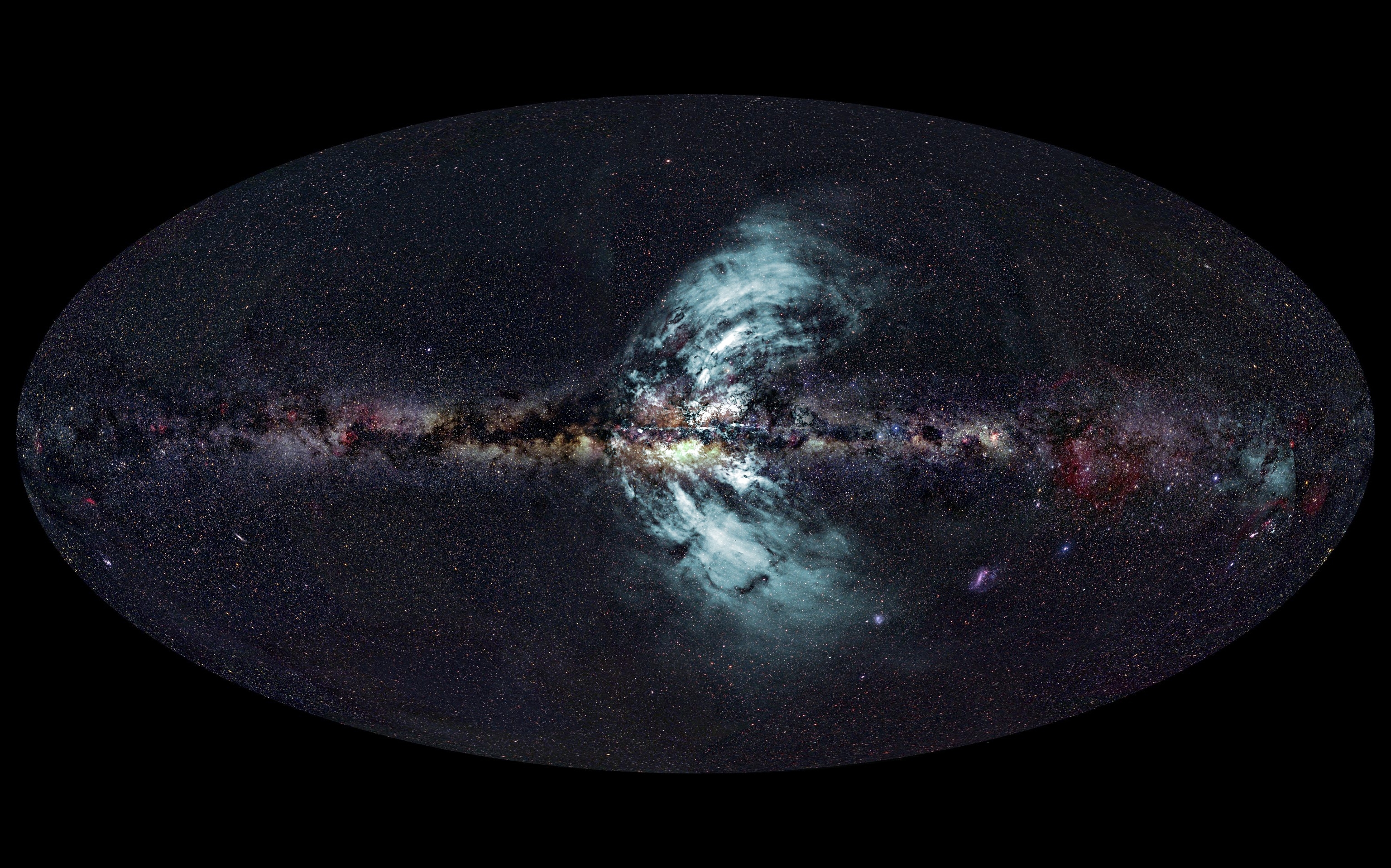They’re big, powerful and fast. Top to bottom, they measure about half the Galaxy’s diameter. They contain as much energy as a million exploding stars. And they are roaring along at 1000 kilometres a second (yes, a second).
Revealed by our Parkes radio telescope (aka The Dish): they are giant geysers of charged particles shooting out from the centre of our Galaxy.
The finding is reported in today’s issue of Nature.

- The “geysers” (in blue) shooting out of the Milky Way.
- Optical image – A. Mellinger, Central Michigan Uni.; radio image – E. Carretti, CSIRO; radio data – S-PASS team; composition – E. Bressert, CSIRO.
“These outflows contain an extraordinary amount of energy — about a million times the energy of an exploding star,” said the research team’s leader, CSIRO’s Dr Ettore Carretti.
But the outflows pose no danger to Earth or the Solar System.
The speed of the outflow is supersonic, about 1000 kilometres a second. “That’s fast, even for astronomers,” Dr Carretti said.
“They are not coming in our direction, but go up and down from the Galactic Plane. We are 30,000 light-years away from the Galactic Centre, in the Plane. They are no danger to us.”
From top to bottom the outflows extend 50,000 light-years [five hundred thousand million million kilometres] out of the Galactic Plane.
That’s equal to half the diameter of our Galaxy (which is 100,000 light-years — a million million million kilometres — across).
Seen from Earth, the outflows stretch about two-thirds across the sky from horizon to horizon.
So how could we have missed them before?
A couple of reasons. The particles are glowing with radio waves, rather than visible light, so seeing the geysers depends on having a telescope tuned to the right frequency (which happens to be 2.3 GHz). And the Galactic Centre is a messy, confusing place where a lot is going on.
VIDEO: Ettore Carretti talks about how the telescope makes maps of the sky.
Our Galaxy has a black hole at its centre, but it’s not that which is powering the geysers. Instead it’s star-power: “winds” from young stars, and massive stars exploding.
About half of all the star-formation that goes on in our Galaxy happens in and near the Galactic Centre. That’s a lot of stars, and a lot of energy.
VIDEO: The Parkes telescope observing as night falls and stars come out and the Milky Way appears overhead. Credit: Alex Cherney / terrastro.com
MEDIA: Helen Sim. Mb: 0419 635 905. E: helen.sim@csiro.au

